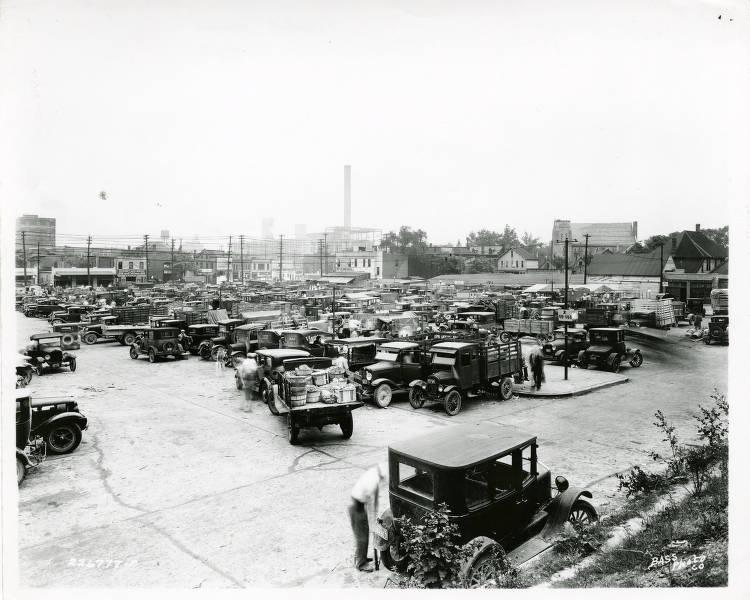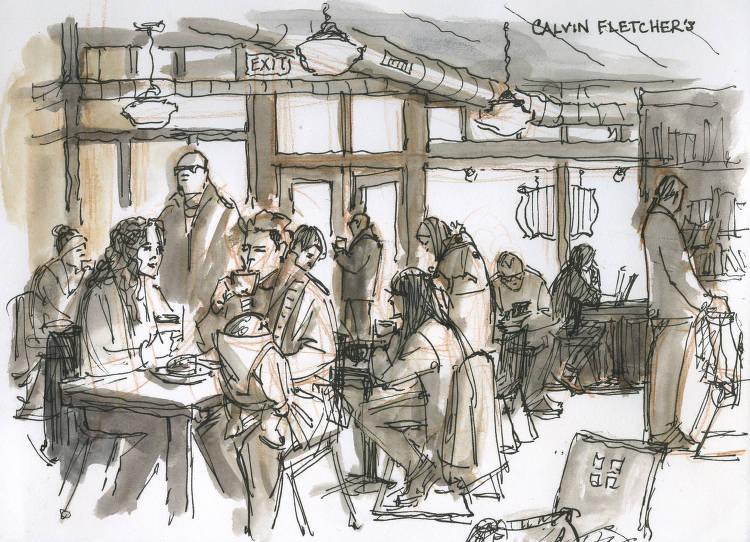Fletcher Place is a southeast historic district bounded by East Street, I-65/70, the Conrail tracks, and Virginia Avenue. The neighborhood took its name from one of its first residents, . In 1839, he and his family moved to Wood Lawn, a farm at what then was the edge of the city. In 1853-1854 he sold half of the farm to a group of Ohio businessmen, with his son serving as the sale agent. The remainder of the farm was sold and platted shortly after Calvin moved in 1855.

By 1872, the subdivision was known as Fletcher Place. Many of the first residents were Irish and German immigrants who built worker cottages along the north-south streets. By the 1860s, businessmen were constructing large, comfortable homes on the east-west street, Fletcher Avenue. Andrew Wallace, a successful wholesale grocer, hired noted architect to design his home at 601 Fletcher Avenue. Later in the 19th century, immigrants arrived from Central Europe and Italy. They purchased existing homes and built additional cottages. Architectural styles in the neighborhood range from Italianate, Federal, and Gothic Revival to Queen Anne and Eastlake-Stick Style.
Fletcher Place was not exclusively residential. A commercial district developed along Virginia Avenue linking Fletcher Place with to the north and to the south. Retail and commercial establishments and apartments were built on the avenue, which got an added boost when the Virginia Avenue Viaduct was completed in 1888. Fletcher Avenue Methodist Episcopal Church, an area landmark, was erected 1872-1880 on the site of the old Fletcher home. and Sixth Christian Church were located nearby as was Calvin Fletcher School 8, built in 1857.

Once one of the preeminent southside churches, the Methodist church still stands. The Fletcher Place Methodist Church incorporated community service into its mission in 1872 and officially established the Fletcher Place Community Center (FPPC) as a 501(3)(c) organization in 1961. of Indianapolis was an outgrowth of these programs during the .
The community center continued to operate out of the church until it closed in 1970. It then moved to 410 S. College Avenue. Since 2004, FPPC has been at the corner of Prospect and State streets. The center is an integral part of the neighborhood, offering a preschool, a free store, hot meals, a food pantry, and a community garden, among other neighborhood services.
Like nearby areas, Fletcher Place declined when residents moved to new suburbs. Then industrial encroachment and construction of Interstates 65 and 70 took land and houses in the area. The founding of a neighborhood organization in 1977 marked the revival of Fletcher Place. Community leaders worked to encourage preservation and protect the integrity of the neighborhood.
In 1982, Fletcher Place was listed on the National Register of Historic Places and continues to undergo restoration by residents. The area has benefited from development downtown and along the Virginia Avenue corridor to Fountain Square. The Methodist church was transformed into Fletcher Pointe Condominiums in 2006. Horace Mann School and the Union Laundry Lofts are other noteworthy restoration projects.

Is this your community?
Do you have photos or stories?
Contribute to this page by emailing us your suggestions.